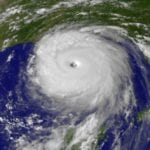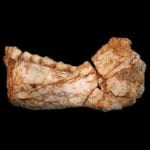 Animals
Animals  Animals
Animals  Weird Stuff
Weird Stuff 10 Strange and Unexpected Things Smuggled into Strict Authoritarian Countries
 Our World
Our World 10 Terrible Crimes That Are Destroying the Amazon
 Miscellaneous
Miscellaneous 10 Timely Stories about Clocks
 History
History 10 Magnificent Heroines Who Went Undercover to Defeat the Nazis
 Music
Music 10 Surprising Stories Behind Famous Songs
 Weird Stuff
Weird Stuff 10 Crazy Things Your Body and Brain Do (Explained)
 The Arts
The Arts 10 Historic Instruments Worth More Than a Luxury Car
 Technology
Technology 10 Crazy AI Controversies… So Far
 Movies and TV
Movies and TV 10 Fictional Plagues We’re Glad Aren’t Real
 Animals
Animals Ten Astonishing Stories about Underwater Life
 Weird Stuff
Weird Stuff 10 Strange and Unexpected Things Smuggled into Strict Authoritarian Countries
 Our World
Our World 10 Terrible Crimes That Are Destroying the Amazon
Who's Behind Listverse?

Jamie Frater
Head Editor
Jamie founded Listverse due to an insatiable desire to share fascinating, obscure, and bizarre facts. He has been a guest speaker on numerous national radio and television stations and is a five time published author.
More About Us Miscellaneous
Miscellaneous 10 Timely Stories about Clocks
 History
History 10 Magnificent Heroines Who Went Undercover to Defeat the Nazis
 Music
Music 10 Surprising Stories Behind Famous Songs
 Weird Stuff
Weird Stuff 10 Crazy Things Your Body and Brain Do (Explained)
 The Arts
The Arts 10 Historic Instruments Worth More Than a Luxury Car
 Technology
Technology 10 Crazy AI Controversies… So Far
 Movies and TV
Movies and TV 10 Fictional Plagues We’re Glad Aren’t Real
10 Astonishing Desert Survival Tales
Deserts—the hot, non-polar sort—are among the harshest places on earth. The temperatures there can change from blisteringly hot to freezing cold within a few hours. With sparse plant and animal life, and by definition very little water, a desert can easily become a graveyard. There are a dozen things that can kill you in the desert, from scorpions to hypothermia and dehydration to Tusken raiders. The people in this list took on some of the worst that nature can throw at us and survived, demonstrating what sheer strength of will (and a little luck) can achieve.
10 Victoria Grover
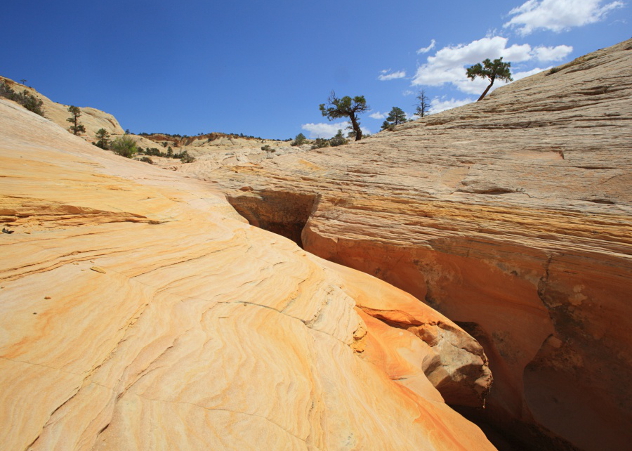
Things looked bad for Victoria Grover when she got stranded in the high desert of Utah. It was April 2012 and the 59-year-old had been out hiking, intending to walk around 10 kilometers (6 mi). Things turned very bad very quickly when she broke her leg jumping down a small ledge. She couldn’t walk, and instead had to shuffle around from a seated position.
Grover had no food, a problem made much worse by her Type 2 diabetes. Night-time temperatures at that time of year can plunge below freezing. She hadn’t told anyone where she was going. She was stuck in the Box Death Hollow Wilderness, which isn’t a name to inspire confidence. Luckily Grover had been on a survival course in the area—in 1972.
Something had stuck from that 40-year-old education, however. Grover used her walking stick and a scarf to brace her leg. She slept during the daytime, and stayed awake all night, huddled under a poncho to break the wind. For the first two days she was able to gather firewood, but her broken leg became too painful and she had to do without on her third night. She was found on her fourth day suffering from hypothermia.
Grover came away with not just a survival story, but also a claim to fame. She was flown to hospital by the same pilot that had rescued Aron Ralston, the climber from the movie 127 Hours.
9 Mauro Prosperi
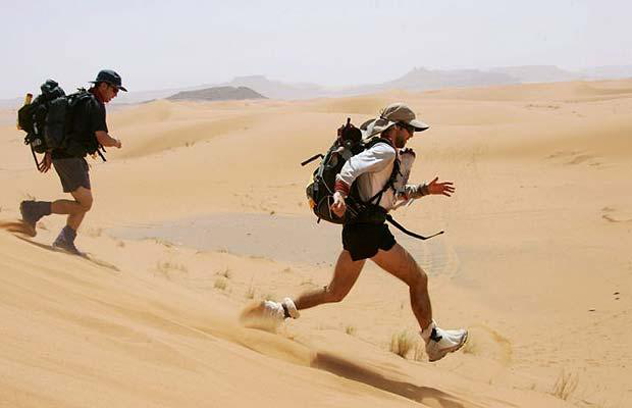
The Marathon des Sables is one of the world’s toughest endurance races. Competitors run more than 250 kilometers (155 mi) across the Sahara in under a week. Every person in the race faces the desert’s trademark brutality, but none had it tougher than Mauro Prosperi. The Italian policeman entered the race in 1994. Not long after the start, Prosperi found himself in the middle of a sandstorm. For several hours he kept his back to the wind, moving a short distance so he wouldn’t be buried.
When the sandstorm abated he continued—but he was going in the wrong direction. When he eventually realized he’d gone wrong he knew what he had to do. He urinated in a bottle so he had something to drink later. He walked in the morning and evening, and found shade during the midday heat. For three days he sipped his bottle, and then another sandstorm hit. That one lasted 12 hours.
He found an old Muslim shrine, which was home to a number of small bats. He was able to capture two of them and drink their blood. Eating flesh would’ve only worsened his dehydration. Yet it was there that Prosperi gave up hope. He decided he should die in the shrine, where his body might be found, rather than in out the open where it would be lost forever. After writing a note to his wife with a piece of charcoal, he cut his wrists, but his blood was too thick to run out and clotted instantly.
This inability to kill himself renewed Prosperi’s desire to live, so he set out again. For another five days he marched across the sands, heading for a mountain range and the promise of water. He found an oasis. Despite not having anything but his own waste for a week, he resisted the desire to down as much as he could, as that would only cause problems (such as hyponatremia). He drank small amounts, until he was found by a family of nomads. They took him to the safety of a nearby Algerian military base.
During his nine days of hell, Prosperi had ended up 300 kilometers (186 mi) away from the correct route. He had lost 18 kg (40 lbs) of body mass. He entered the race again four years later, but once again failed to finish. This time, he stubbed his toe.
8 James Riley

For most people on this list, the solitude and isolation of the desert was one of the biggest problems. For James Riley, a 19th century sea captain, it was the inhabitants of the Sahara that made his situation as bad as it could be. Riley was on a trading mission in August 1815 when his ship ran aground on the coast of Morocco. He and his crew were stranded without water, and with only salted pork to eat (which did no good for their thirst).
Yet the Sahara of the 19th century was home to people that Riley really didn’t want to meet—slavers. Some of his descriptions of the locals maybe have been exaggerated. He said they had sharpened teeth for eating human flesh, and bright red eyes. Yet after a short while on the beach his biggest fear was realized. A number of men from the local Sahrawi people found the American sailors, and the dehydrated crew was taken into slavery.
After marching weeks through the desert, the captors brought the Americans to be sold. Riley came up with a plan—he told one of the potential buyers that there was a man in a Moroccan town, Swearah, that would pay handsomely to free Riley and his cohorts. The buyer, a man named Hamet, agreed to take Riley there, but said he’d slit Riley’s throat if the story was false.
The town was hundreds of miles away, and the slaves were forced to drink camel urine to survive. They marched for a month, and Riley lost more than half of his bodyweight. When they were a short distance outside of the town Riley was forced to write a note to his “friend.” In desperation he addressed it to “The French, English, Spanish or American Consuls,” and briefly begged them to find someone to buy him and his men.
Riley was, astonishingly, in luck. The English consul received the note, negotiated a price, and bought the men’s freedom. Riley returned to the United States and wrote a book about his story in 1817, which went on to become highly popular.
7 William LaFever

When William LaFever needed to get from Boulder in Utah to Page in Arizona, he decided to take the scenic route. LaFever was on his way to collect a wire transfer from his father, and his family had expected him to head there on public transport. The young autistic man had other ideas, and decided to trek 144 kilometers (90 mi) along the Escalante River with his dog.
The journey didn’t go as planned. LaFever ran out of food and the dog ran off. The 28-year-old’s gear became too heavy and he abandoned it. Luckily he had stayed close to the water, so had enough to drink. Nevertheless, without food he would only last so long. He resorted to catching frogs, and scavenging anything else that looked edible. He’d been gone for over two weeks when his sister reported him as missing, and no one had any idea where he’d disappeared to.
By sheer coincidence the county’s sheriff had recently completed a course in finding missing autistic people. He knew they tended to be attracted to water, and thought the river would be as good a place as any to look. He arranged for a helicopter to fly its length and back again, but without much hope—he described the area as “some of the most unforgiving terrain you will find anywhere on Earth.”
Yet LaFever was in luck, and the helicopter spotted him as he lay in the river, only barely able to wave at the crew. When he was found LaFever was emaciated. He’d been in the desert for three weeks, and he was too weak to crawl. He had spent the last few days sleeping on the riverbank by night, and rolling into the water during the day to stay cool. The sheriff’s department reported that 24 hours more and they would have been too late.
6 The Nigerien Immigrants
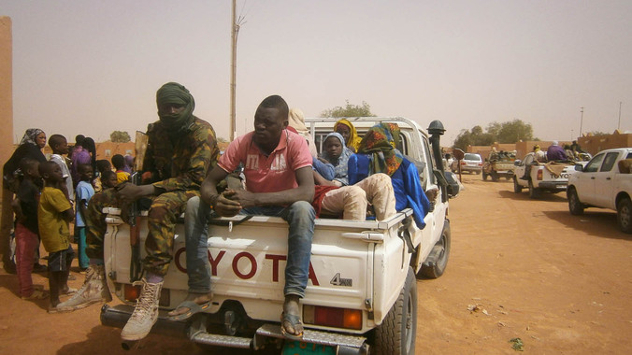
The West African state of Niger is one of the world’s poorest. It is also one of the world’s most sparse countries, as 80 percent of its land is in the Sahara Desert. Food crises led charity Save the Children to call it the worst place on Earth to be a mother. Every year, many Nigeriens attempt to flee the country, hoping to find a better life elsewhere. For most, this means turning to gangs of people smugglers to get them to their destination, normally Libya or Algeria.
People that get into the business of illegally transporting the desperate for cash tend not to be the nicest folk in existence. It’s not uncommon for smugglers to abandon groups of migrants in the middle of the world’s largest desert when things go wrong. This is effectively a death sentence. In October 2013 a group of over 100 people headed for Algeria were stranded when their truck ran out of gas. The smugglers drove off in a second truck, promising to return with help. They didn’t come back, and 92 people died. Over half of the victims were children.
One of the few people to make it out of the desert alive was a 14-year-old girl named Shafa. Problems began long before the immigrants were abandoned. The truck Shafa was riding in broke down, and it took a day to be repaired. Water ran out during that time, and it would be another two days before they got any more. The drivers kept their water for themselves. People died, and those left were crammed into the back of the vehicle with over a dozen corpses.
Later the smugglers came upon Algerian security forces, and turned back for fear of being caught. They drove the migrants back into Niger, and water ran out again. Shortly afterwards the gas ran out in one truck, and the drivers abandoned the immigrants altogether. Shafa was with her mother and two sisters. They waited two days, without anything to eat or drink, before they realized no one was coming back to get them.
A group of survivors began to walk through the desert to try and find some help. One of Shafa’s sisters died, and her body was buried. Not long after, Shafa’s other sister died, then her mother. Shafa buried them both herself. She had been in the desert for three days, without anything to eat or drink, and had given up hope of getting out alive when a car stopped to help her. Shafa was given some food and water, and eventually returned to her village. She is the last surviving member of her nuclear family, and is now living with an aunt.
5 Robert Bogucki
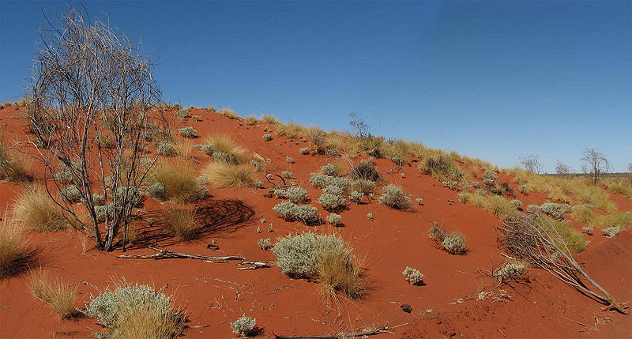
Robert Bogucki was a fireman from Alaska with an itch to discover his spiritual side in the wilderness. While Alaska’s not short of the sort of terrain that can bring a person closer to nature, Bogucki opted for a very different environment—Australia’s Great Sandy Desert. Aside from the packs of dingoes that regularly rip livestock to death, the desert is home to the desert death adder. In case “Great Sandy Desert” hadn’t tipped you off, the Australians don’t always name things ironically, so a death adder is definitely a safety issue.
Bogucki set off on July 11, 1999, with the intention of cycling and trekking several hundred miles across the outback. Fifteen days later a group of tourists found his bike abandoned on a trail, alongside footprints trailing into the wilderness. The discovery triggered a massive search operation, but police found no trace of Bogucki. After 12 days they guessed he’d either hitchhiked his way back to civilization or died, and called off the operation.
The missing fireman’s parents weren’t happy to give up on him, however, and hired their own private trackers. Bogucki was eventually found by a news team in a helicopter, 43 days after he’d set off. The crew that found the Alaskan wanderer had to leave their photographer behind to make room to fly Bogucki out, and get another chopper to pick their man up later.
Bogucki had survived by drinking muddy water and eating flowers. He had lost 20 kilograms (44 lb), but was otherwise in surprisingly good condition. The doctor that treated him said he had nothing worse than a few scratches, a far cry from the sunburn and blistering she would have expected.
The number of days missing—43—is significant: The highly religious Bogucki had long harbored a desire to test his faith, as Jesus did, with 40 days alone in the wilderness. Because of this, many Australians believe Bogucki deliberately got himself lost. Police described the man as “irresponsible,” and there were calls for him to pay for a portion of the cost of his rescue. Bogucki claimed he’d successfully “scratched the itch” that led to his adventure. Since the total cost to find him was around US$72,000, that may be the most expensive itch in history.
4 Ed Rosenthal
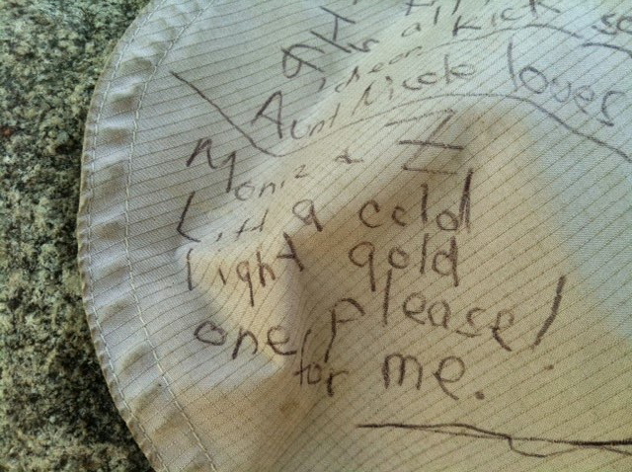
Ed Rosenthal has the distinction of being the only person on this list to have written a book of poetry inspired by his time stranded in the desert. His story began with what was supposed to be a short hike, a trail of 6.5 kilometers (4 mi) he’d done plenty of times before. Yet he neglected to bring much water, and then he simply got carried away. He took a turn into one canyon, then off into another, miles away from his original course. “I don’t know why I did it,” he said at a press conference afterwards.
Rosenthal ended up in a place he didn’t know, with nothing to drink. He tried his own urine, but couldn’t stand it. He sucked moisture from a plant but found it too tiring. After a few days he gave up, and began writing a will on his hat. He wrote messages to his family, described the type of funeral he would like, and even began a poem. Then he turned to God, prayed for rain, and got it. His Jewish faith was reignited with a passion. “My conclusion is that God is real. Really.”
He’d tried signaling with his foil blanket, and lit fires at night with flares. No one came. On the sixth day he was slumped in a canyon, not expecting to last another day. Luckily, he was spotted by a rescue helicopter. “I’ve never been so happy to see anybody,” he said afterward. A couple of days in hospital brought him back to health, and also to a decision to give up hiking.
3 The Tragedy At Kufra
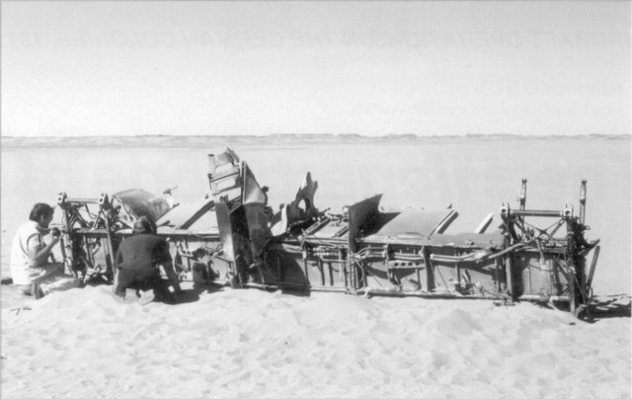
Many of the people on this list pulled through (barely) because they did everything they could to keep themselves alive for as long as possible. Noel St Malo Juul, a World War 2 flight mechanic with the South African Air Force, was part of a group that did almost everything they shouldn’t have. He survived out of luck more than anything else.
Juul was part of a crew of 12 airmen spread across three aircraft on a routine patrol from their station in Kufra in the Libyan desert. After spending several hours on their preplanned route and getting back to base, they decided to continue flying as they still had some fuel left. Their first mistake was to take no notice of the direction in which they were headed, and eventually they had to make a forced landing when one aircraft began running low on fuel.
After spending a night sleeping under the stars, the crew sent one plane out to fly 30 minutes in a number of directions. They expected to find their base or be rescued fairly quickly, so drank 75 liters (20 gal) of water between them on their first day. Their airborne scout didn’t have any luck finding local landmarks and they ran out of petrol completely. By the third day they had used up all water and became desperate for liquid. They broke open their compasses and consumed the alcohol inside—a bad move, since it was methanol and highly toxic.
To gain some relief from the heat, the men decided to spray themselves with their aircrafts’ fire extinguishers. They got relief for a few seconds, then developed extremely painful open wounds across their skin from the blasts. The next day people started dying. The first man to go shot himself because he couldn’t stand the pain in his stomach caused by the alcohol he’d consumed. Another five people had died by the next morning, and they continued to succumb to dehydration and the effects of their injuries one by one.
A rescue aircraft finally spotted the downed planes after eight days. Juul was the only person left alive, though barely. After the incident the Air Force made sweeping changes to its rules for desert flight, including a requirement to include survival instructions in aircraft. The graves of the dead airmen, the wreckage of one aircraft, and even some of their rations are still in the desert today. A nephew of one of the men found the items in 2001, but the Libyan government declared them to be antiquities that should be left in place.
2 Hank Morello
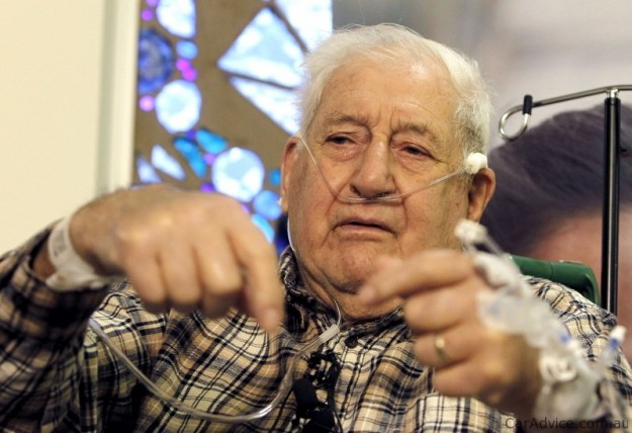
Arizona resident Henry “Hank” Morello took a wrong turn shortly after he left his favorite restaurant in early 2011. When he realized he’d gone astray he tried to turn around, but ended up sliding his car into a ravine. This would be bad enough for anyone, but Morello was 84 and didn’t have any water. Luckily it was February, so temperatures weren’t going to get as high as they do during an Arizona summer. Unfortunately, it also meant that average lows were going to hover just above freezing.
He couldn’t get a phone signal before his battery died, and he fell over when he tried to leave his car. He decided to stick with the vehicle, as it would be easier for rescuers to spot. It didn’t take long for him to become thirsty, so he went for the only available liquid—his car’s windshield fluid. Morello was stuck there for five days. Drawing on his Catholic faith, Morello prayed to St. Anthony, who is the patron saint of lost things.
After five days the car was found by a group of hikers. Morello was in a surprisingly good condition, though he personally doubted he would last another night in the cold. He was lucky, given that windshield fluid contains methanol. Drinking that particular poison turned out a lot better for him than it did for the airmen from Kufra. After the event, one toxicologist said he would normally expect someone that drank windscreen wiper fluid to get sick and even go blind within a few days. Making sure to have some water in your trunk before you set out is a much better solution.
1 Ricky Gilmore
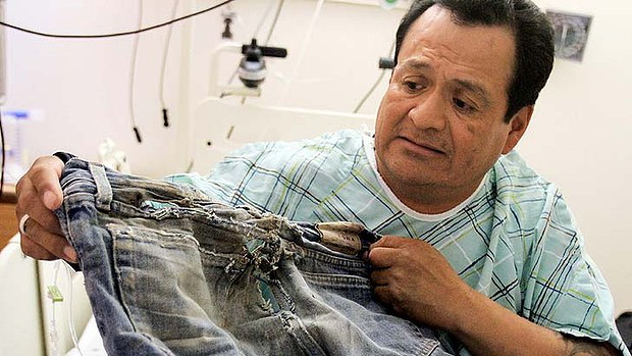
Things didn’t go well for Ricky Gilmore, a 49-year-old man from New Mexico, when he tried to hitchhike to a nearby town for liquor. At first all was well—a couple picked him up, then dropped him back off again. Gilmore offered to cook them steaks as a thank you, but the couple suggested going out for a joyride first. Then they asked Gilmore to share his alcohol. When Gilmore declined, you could argue the couple overreacted just a teensy bit.
The young man in the car grabbed Gilmore by his legs and threw him out, miles from anywhere, in the middle of the desert. While that’s bad enough, Gilmore was paraplegic, having lost use of his legs in a car accident a few years earlier. The couple had dropped off Gilmore’s wheelchair at his house before their “joyride.” Gilmore was left with little choice but to use his arms to drag himself across the desert floor.
Over three days Gilmore crawled as best he could. In total he made it 6.5 kilometers (4 mi), all without food or water. Two cars spotted him, honked, and drove on (because some human beings are apparently awful beyond words). On the third day a driver decided that maybe he should stop to see if the person lying on the side of the road in the middle of the desert might need some sort of assistance.
The assistance Gilmore needed was urgent medical attention. He was hypothermic, his kidneys were starting to fail, and his clothes were in tatters. The skin on his legs and buttocks was “shredded,” his wrist was sprained, his kidneys were close to failure and he had a blood infection. He needed to spend more than a week in hospital, so on top of everything else his steak had probably gone bad.
After 19 years, he decided that now was the right time to put his hitchhiking days behind him.
This is the most thirst-inducing list Alan has written, and took two liters of Irn Bru to finish. He would love to write a list of ten people that escaped from desserts, but the world is too untasty a place to provide ten examples.
